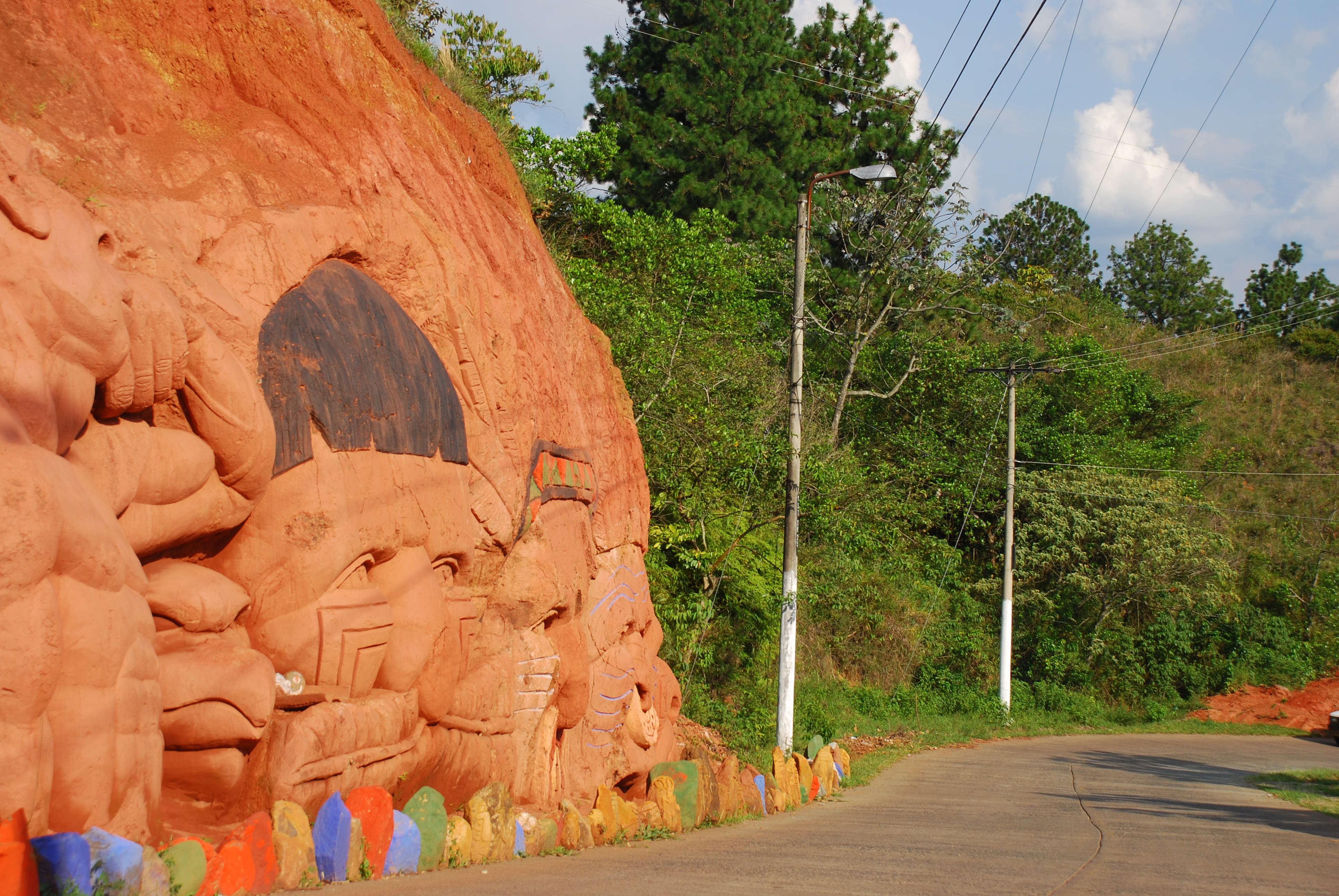Cristo Rey (Colombian Statue) on:
[Wikipedia]
[Google]
[Amazon]
''Cristo Rey'' (English: Christ the King) is a statue 26 meters tall located in the ''Cerro de los Cristales'' (Hill of the Crystals) in the village of Los Andes, west of the city of MONUMENT TO CRISTO REY
(Santiago de Cali County)

 As people ascend the hill they can see the work of artist Carlos Andrés Gómez, who for two years sculpted his work on 34 ravines. This work is known as the biblical scenes of
As people ascend the hill they can see the work of artist Carlos Andrés Gómez, who for two years sculpted his work on 34 ravines. This work is known as the biblical scenes of
Cali
Santiago de Cali (), or Cali, is the capital of the Valle del Cauca department, and the most populous city in southwest Colombia, with 2,227,642 residents according to the 2018 census. The city spans with of urban area, making Cali the second ...
, Valle del Cauca, Colombia. The hill is so named because of the large amount of quartz
Quartz is a hard, crystalline mineral composed of silica (silicon dioxide). The atoms are linked in a continuous framework of SiO4 silicon-oxygen tetrahedra, with each oxygen being shared between two tetrahedra, giving an overall chemical form ...
that could be collected in the surrounding area.
On Sunday October 25, 1953, the statue was inaugurated at its summit an image of Christ in celebration of the fifty years following the end of the War of a Thousand Days
The Thousand Days' War ( es, Guerra de los Mil Días) was a civil war fought in Colombia from 17 October 1899 to 21 November 1902, at first between the Liberal Party and the government led by the National Party, and later – after the Conser ...
. It is made of iron and concrete, with a mass of 464 tons and a height of 26 m, of which 5m belong to the pedestal.(Santiago de Cali County)
History
The Jesuit priest José María Arteaga had commissioned the Palmiran artist Gerardo Navia Carvajal to build the statue, but he only made a model before abandoning the project.Tourism

 As people ascend the hill they can see the work of artist Carlos Andrés Gómez, who for two years sculpted his work on 34 ravines. This work is known as the biblical scenes of
As people ascend the hill they can see the work of artist Carlos Andrés Gómez, who for two years sculpted his work on 34 ravines. This work is known as the biblical scenes of Golgotha
Calvary ( la, Calvariae or ) or Golgotha ( grc-gre, Γολγοθᾶ, ''Golgothâ'') was a site immediately outside Jerusalem's walls where Jesus was said to have been crucified according to the canonical Gospels. Since at least the early mediev ...
. In the first canyon carved ''Existence'', as a tribute to life and man; in the second, the ''Lament of the Pacha Mama'', as a protest of nature for the damage that man has done to the environment; in the third gave life to Golgotha, to accompany the faithful make pilgrimage at Easter. In the fourth ravine is ''The Garden of Eden''.
The figures modeled with cement and clay range from 50 centimeters to 5 meters high and extend over five kilometers.
The entrance to the monument of ''Christ the King'' is free. It is open from 8:00 am to 11:00 pm. There is a chapel, restaurant and parking, among other features.
Currently the sculpture is visited annually by 290,650 local and foreign tourists from the rest of Colombia and is one of the wonders of modern Colombia.
See also
*Christ the King (Almada)
The Sanctuary of Christ the King ( pt, Santuário de Cristo Rei) is a Catholic monument and shrine dedicated to the Sacred Heart of Jesus Christ overlooking the city of Lisbon situated in Almada, in Portugal. It was inspired by the '' Christ the R ...
in Portugal
* ''Christ the Redeemer'' in Brazil
* ''Cristo Rey'' in Mexico
* ''Cristo de la Concordia
''Cristo de la Concordia'' (''Christ of Peace'') is a statue of Jesus Christ located atop San Pedro Hill, to the east of Cochabamba, Bolivia. It is accessible by cable car, or by climbing 2,000 steps. The statue is tall, on a pedestal of , for ...
'' in Bolivia
* ''Cristo de las Noas
''El Cristo de las Noas'', located on the Cerro de las Noas hill, in the Mexican city of Torreón, Coahuila, is a large sculpture by Vladimir Alvarado, portraying Jesus Christ. It was built between 1973 and 2000.
The statue measures 21. ...
'' in Mexico
* '' Christ of Havana''
References
{{reflist Monuments of Colombia Colossal statues of Jesus